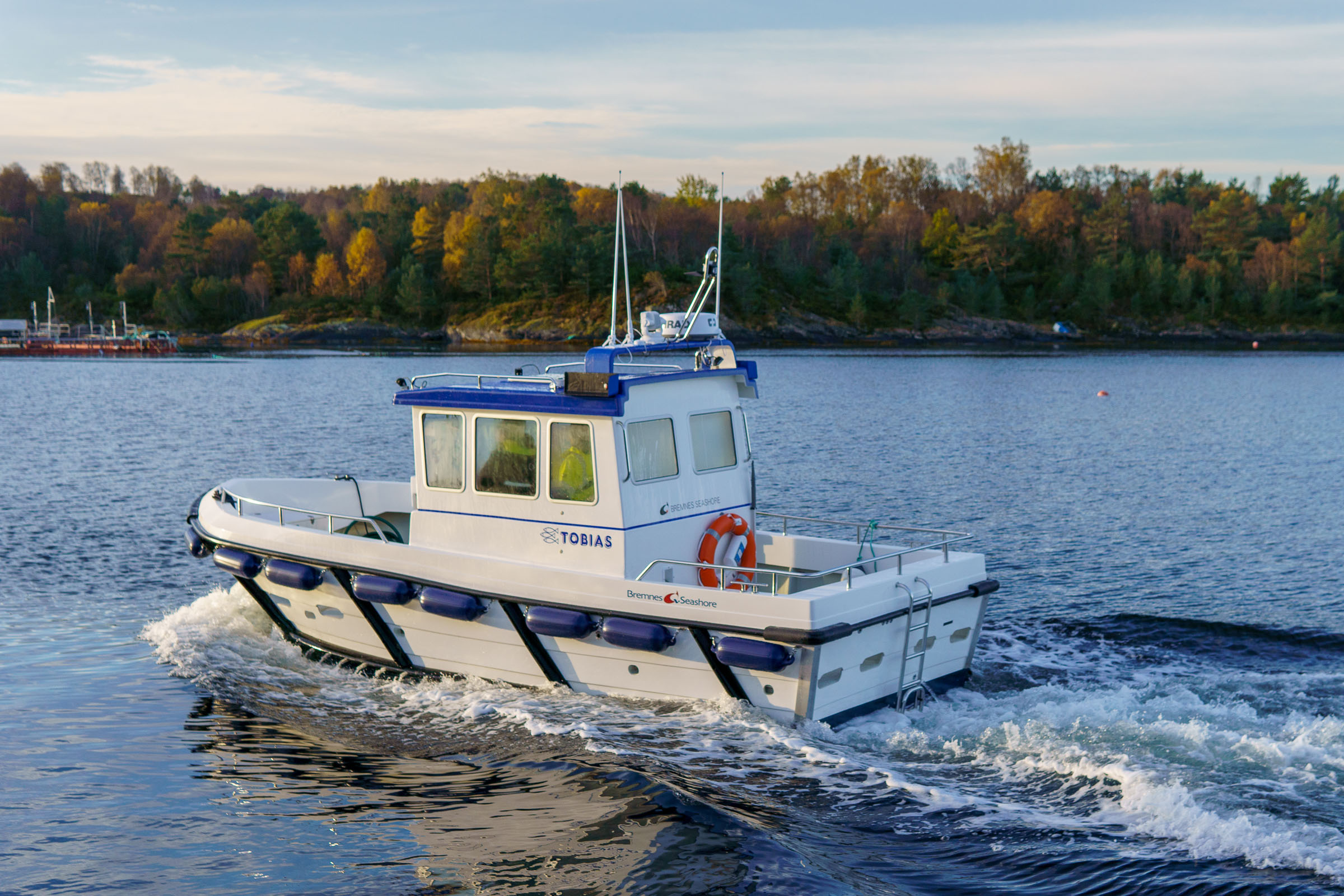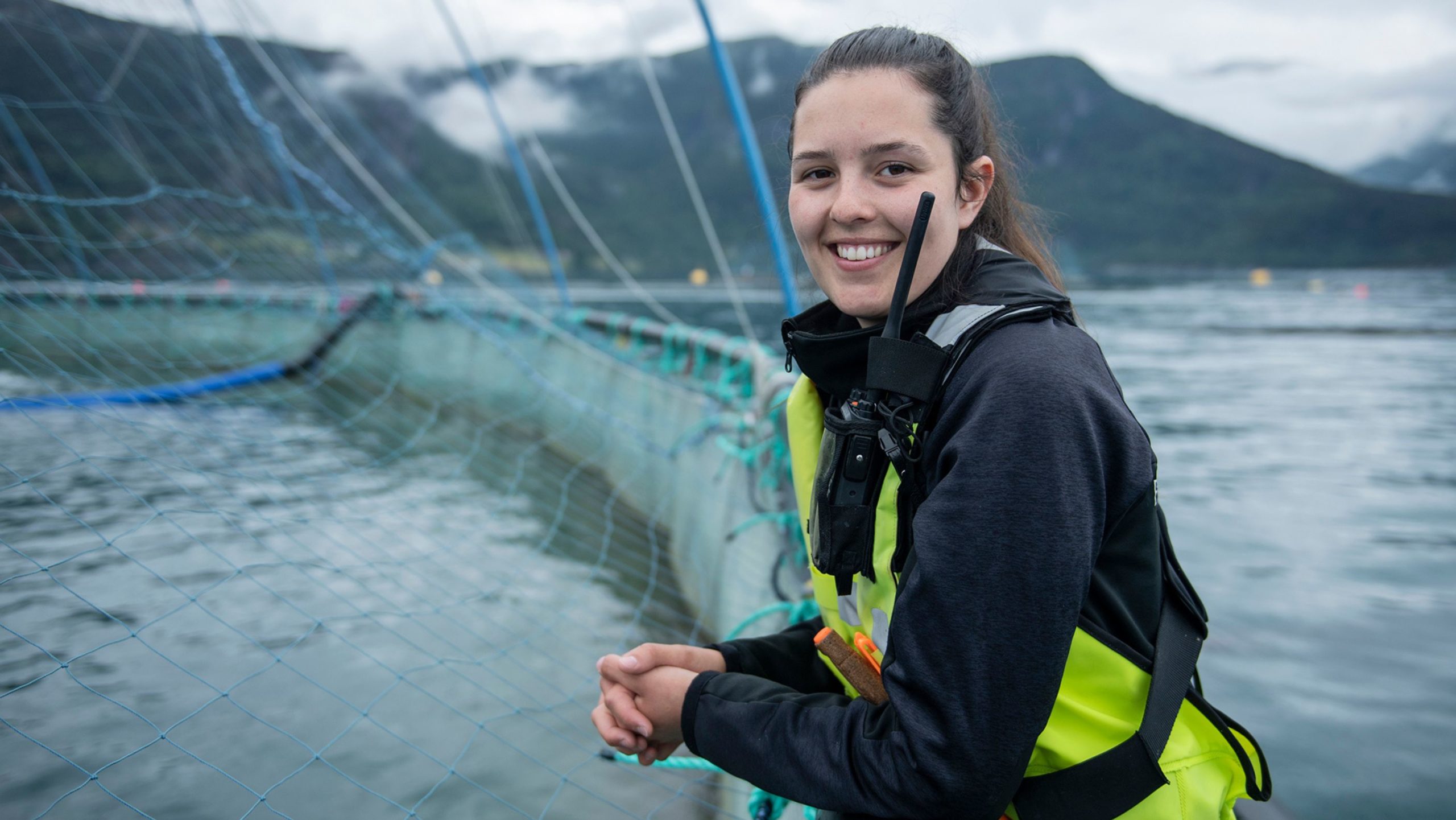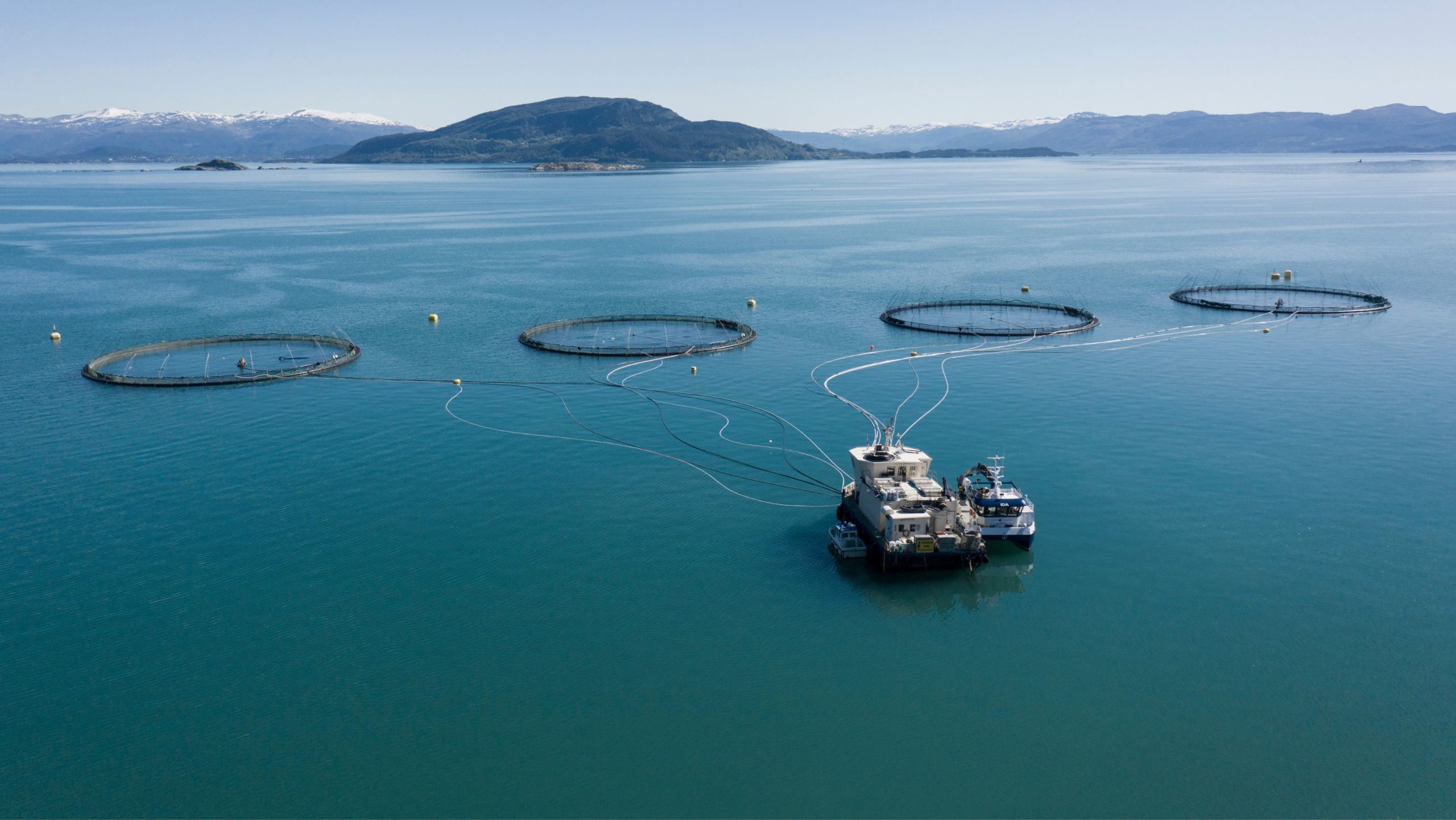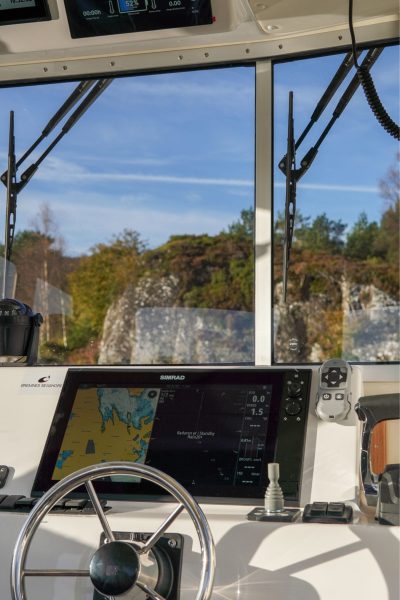
Image: ‘Tobias’, an Admiral 25 shaft-drive, powered by an Evoy Hurricane 400+ hp electric motor system. Photo credit: Evoy
The move to net zero requires new solutions for marine vessels, and the commercial marine sector is evolving. It’s not just the tourism industry that recognises the environmental and economic benefits of using electric boats for daytrips and eco-minded excursions.
The shift to electric workboats used within aquaculture and fish-farming industries is rapidly gaining in popularity as well.
Where vessels are typically being used for short-range duties, electric is a sought-after alternative to internal combustion. Evoy specialises in high-output inboard and outboard motors, that can be installed either in new-builds, or retrofitted to existing hulls, with batteries that normally take up the same space that once housed the fuel tank.
Evoy has delivered several electric motor systems for aquaculture and fish farming customers’ workboats. We’re at the forefront, powering aquaculture’s transition to electric.
From a sense of collective responsibility to reduce emissions, the use of zero-emission propulsion deserves as much attention as we can possibly give it.
From a business perspective, electric boats make a compelling case as to why more aquaculture and fish-farming businesses should be transitioning towards electric within their fleets.
With zero diesel fuel costs, significantly less moving parts compared to an internal combustion engine, and no regular service items, such as fuel filters to think about, electric motors are easier and less costly to run and maintain.
Initial acquisition cost is higher, but after operational expenses, such as the high cost of fuel and servicing that diesel engines require, electric motors start paying back immediately. Use cases show that aquaculture businesses start to see a financial return from electric workboats in two plus years.
“We are quite sure that electric will be the future,” said Anders Grønås, Technical Leader at Bremnes Seashore Group. Bremnes uses 400hp Evoy Hurricane motor systems to power two of their workboats. “As with anything else that’s new, we were fully aware there would be costs at the beginning.”
Anders Grønås, Technical Leader at Bremnes Seashore Group“We are quite sure that electric will be the future.”
From a user’s perspective, aquaculture professionals have told us they much prefer to drive an electric boat, with inherently less vibration, less noise, less fumes, and knowing they won’t be leaving behind an oily residue. All in all, when using electric workboats for aquaculture, their workday is calmer and easier.

Image: Norway’s Bremnes Seashore, a pioneer in quality salmon farming. Photo credit: Peter Tubaas, Vestland Media.
Anders Grønås, Technical Leader at Bremnes Seashore Group“Our boat personnel and our maintenance team are quite happy. You only need to remember to plug it in.”
Evoy is now one of the world’s leading suppliers of high-output electric motor systems, with inboards from 120hp to 400hp and outboards from 120hp to 300hp, for boats of between 15ft to 50ft. Evoy motors can be charged with a 6kW, 22kW or 44kW onboard charger with standard shore power cable, or from a charging point on a barge out at sea.
The typical charge pattern is at the end of a shift, ready for the next day’s use. For quick turnaround times, Evoy systems can DC- fast charge, which will give 80% boost in less than an hour.
With no need to warm-up the motor, electric boats can be driven straightaway. Electric motor systems have smooth continuous power delivery and instant torque; they are quick and responsive to drive, adding a level of immersive contentment when underway.
Range is always a discussion point with electric boats. With battery density levels and hull efficiency improving all the time, range is far less of a concern than ever before.
Working range for normal average use is 25nm at 25knots* but can extend to more than 40nm with slower speeds or multiple battery packs, and range extenders carried onboard will ensure there is enough range for higher-than-average needs.
* Based on 126kWh configuration, 80% DoD, 4.0 kWh/nm, exp. from Goldfish X9
Aquaculture is one of the world’s most efficient, sustainable methods to produce high-quality protein. As Norwegian fish farmers work towards responsibly filling needs in global food supply, fish farming in Norway has grown from 0.8% of the GDP in 2004 to 3% in recent years. If you’ve ever experienced salmon from a licenced Norwegian farm, you’ll know that it’s not only a delicacy, but little else compares from a nutritional perspective.
The Bremnes Seashore Group — renowned for the premium SALMA brand — account for 35,000 farmed and harvested tonnes annually, with another 15,000 tonnes processed and packaged on behalf of other Norwegian producers.
For Bremnes, sustainable production starts with farming methods and extends to the fleet. Bremnes built and still operates the world’s first fully electric fish farm. Out of 30 workboats boats, made up of personnel carriers and working boats, two have been converted to electric so far.
‘Tobias’, an Admiral 25 shaft-drive of 7.8m length and ‘Elisabeth’ an 8.6m Polarcirkel 860, have Evoy Hurricane 400+ hp inboard motors installed, with battery packs relevant to each boat’s needs.
‘Tobias’ Admiral 25
‘Elisabeth’ Polarcirkel 860

Image: Norway’s Bremnes Seashore uses electric workboats in their fleet. Photo credit: Peter Tubaas, Vestland Media.
The ‘Tobias’ Admiral, for example, travels five minutes to the first salmon pen, and another 10 minutes to the second salmon pen (about 5nm) a few times a day. At the end of a typical workday, the boat has consumed 60% of its battery. Bremnes has charging capability quayside as well as shorepower extending to pen sites at three out of 24 fish farm locations.
The company committed to reducing their carbon footprint and have further plans for more electric boats in 2025.
Substantiating the decision to place electric firmly on the agenda, Anders Grønås, Bremnes’ Technical Leader told us:
“The reality is that boats used in this industry spend quite a lot of their time at zero speed and engines are left switched on and idling for much of their time.
“This seems to make little or no sense, because apart from burning unnecessary fuel, leaving an internal combustion engine idling for too long can sometimes cause premature wear on the internals, and reduce the engine’s service life.
“Electric motors on the other hand, use none of their energy when the throttle is at zero, which prolongs the batteries and causes no mechanical harm.
Anders Grønås, Technical Leader at Bremnes Seashore Group“Bremnes has a huge focus on reducing carbon emissions. We were the first company worldwide to have an emission-free fish farm. We’re looking at adding more electric boats to our fleet in 2025."

Image: ‘Tobias’ Admiral 25 with Evoy Hurricane 400+ hp electric motor system. Photo credit: Evoy.
Accelerating the shift to emission-free boating is Evoy’s mission, and we’re not alone. The European Maritime, Fisheries and Aquaculture Fund (EMFAF) 2021-2027 has dedicated €6.108 billion to support innovative projects that contribute to the sustainable use and management of aquatic and maritime resources. The fund emphasizes the importance of the transition to zero-carbon fish farming and sustainable aquaculture practices. Applicants can check with national authority in charge of managing the operational programme in their individual EU country to receive support for electric workboats.
Ready to lead the future of aquaculture with electric-powered vessels? Explore the full range of boats powered by Evoy’s advanced electric motor systems on our configurator. Whether you’re looking to retrofit your existing fleet or invest in new sustainable workboats, our high-output electric solutions are designed to meet the demands of the aquaculture industry. Get in touch today to find out how Evoy can power your aquaculture operations efficiently and sustainably.
Subscribe to our Newsletter
Enter your email *
Join our newsletter to get the latest updates from Evoy!
Enter your email *